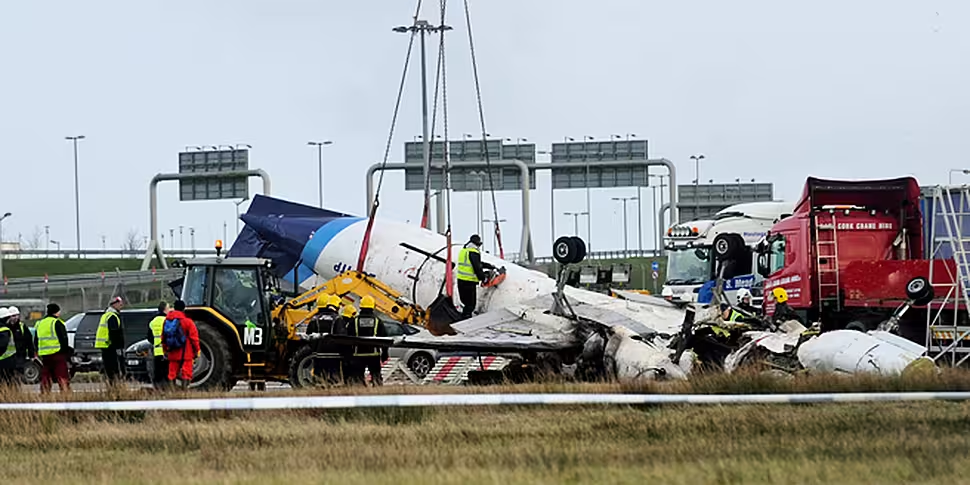Updated 11.00
A report into the 2011 Cork air crash, in which six people were killed, has identified systemic deficiencies in pilot training and scheduling of crew as significant factors. The report also cites fatigue on the part of flight crew members.
It finds there was a probable loss of control during a 'go around' as the aircraft made a third attempt at landing in thick fog.
This reports makes a total of 11 Safety Recommendations to various entities.
The report says at 09.50am on the 10th of February 2011 the Manx 2 flight from Belfast was attempting its third approach to Cork in foggy conditions. This report finds that control of the aircraft was lost during this procedure and crashed on the runway.
Six people died, including both pilots. Four passengers were seriously injured and two received minor injuries.
It lists a number of significant factors - including that the approach continued in poor visibility below those required; tiredness and fatigue on the part of the flight crew members and an inappropriate pairing of flight crew members.
It also finds systemic deficiencies at the operational, organisational and regulatory levels - including pilot training, scheduling of flight crews, maintenance and inadequate oversight of the operation by the operator and the State of Registration.
Report findings
The Air Accident Investigation Unit report lists the following as contributing factors:
- The approach was continued in conditions of poor visibility below those required
- The descent was continued below the Decision Height without adequate visual reference being acquired
- Uncoordinated operation of the flight and engine controls when go-around was attempted. The engine power-levers were retarded below the normal in-flight operational range, an action prohibited in flight
- A power difference between the engines became significant when the engine power levers were retarded below the normal in-flight range
- Tiredness and fatigue on the part of the Flight Crew members
- Inadequate command training and checking
- Inappropriate pairing of Flight Crew members
- Inadequate oversight of the remote Operation by the Operator and the State of the Operator
Read the full report here









